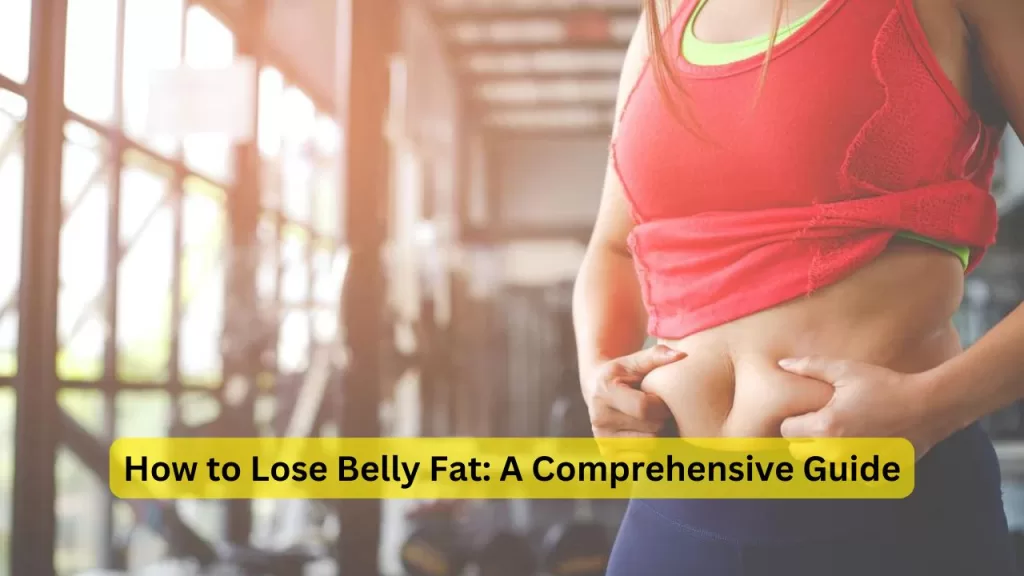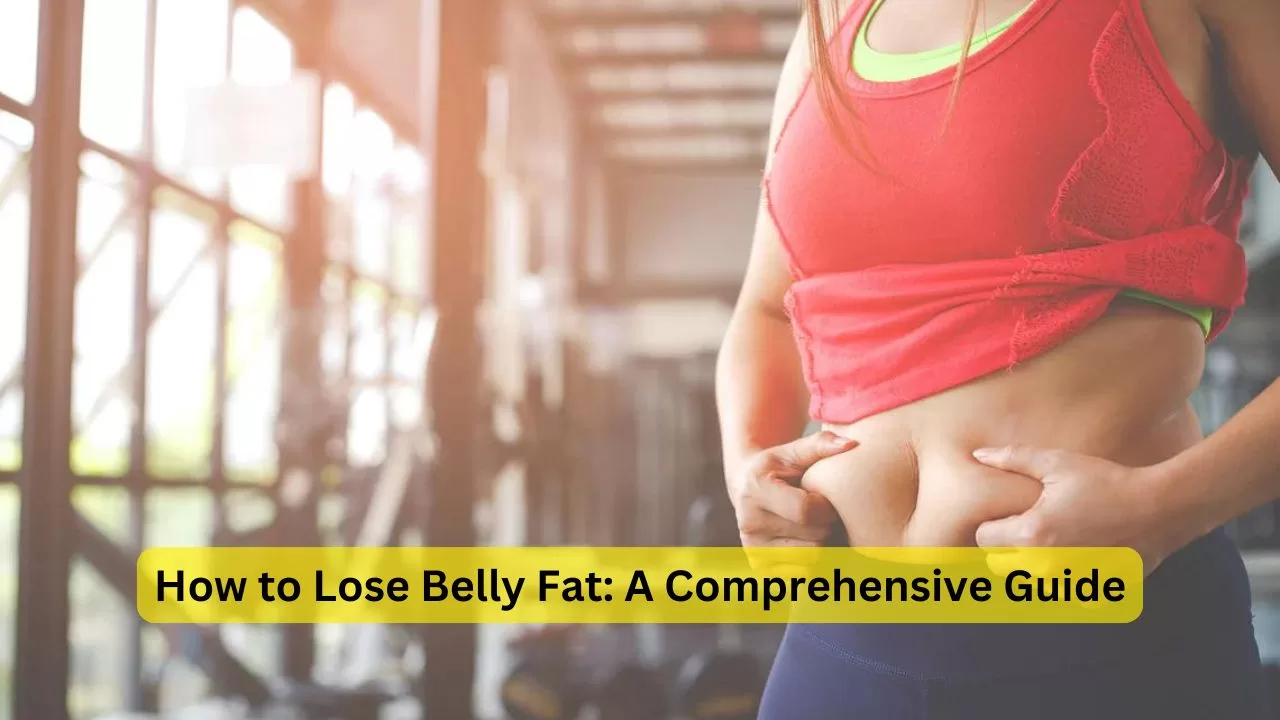
The most effective way to lose belly fat is through a combination of a healthy diet, regular exercise, and lifestyle changes. Losing belly fat requires consistency and dedication, but with the right approach, it’s achievable.
Introduction
Losing belly fat is one of the most common fitness goals, but it can also be one of the most challenging. Belly fat, or visceral fat, not only affects how your clothes fit but also poses serious health risks. Studies show that excessive fat around the midsection can increase the risk of chronic diseases like heart disease, type 2 diabetes, and even certain cancers.
To effectively reduce belly fat, you need a combination of balanced nutrition, regular physical activity, and consistent lifestyle habits. In this guide, we’ll explore the best strategies for losing belly fat, focusing on sustainable methods that promote long-term health and fat loss.
1. Understanding Belly Fat and Its Impact on Health
Belly fat is not just a matter of appearance—it’s tied to various health issues. Visceral fat, the fat that surrounds your internal organs, is linked to metabolic diseases. Unlike subcutaneous fat, which sits just beneath the skin, visceral fat is metabolically active, meaning it can contribute to insulin resistance, increased cholesterol levels, and inflammation. This fat is particularly harmful because it surrounds key organs like the liver and pancreas.
Losing belly fat helps to reduce these health risks, but it requires more than just targeted exercises. A holistic approach, including dietary changes and physical activity, is needed to shrink visceral fat and improve overall well-being.
2. The Importance of a Balanced Diet
Your diet is one of the most important factors in belly fat reduction. Focus on consuming whole, unprocessed foods that are rich in fiber, lean protein, and healthy fats. Fiber, especially from whole grains, vegetables, and legumes, helps regulate digestion and control hunger by promoting feelings of fullness. Protein, found in foods like chicken, fish, and tofu, is essential for muscle maintenance and boosts metabolism, aiding fat loss.
On the other hand, highly processed foods and refined sugars contribute to insulin spikes and fat storage. Limit or avoid sugary beverages, pastries, and foods made from white flour, which are often calorie-dense and nutrient-poor.
3. Incorporating Regular Exercise
Regular exercise is essential for reducing belly fat. Cardiovascular activities like running, cycling, or swimming burn calories and target body fat. More intense forms of cardio, such as High-Intensity Interval Training (HIIT), are especially effective at burning fat in shorter timeframes.
Incorporating strength training is also crucial for belly fat loss. Building lean muscle helps increase metabolism, allowing you to burn more calories even at rest. Exercises like squats, lunges, and deadlifts work large muscle groups and accelerate fat burning across the body.
4. The Role of Sleep and Stress Management
Getting enough sleep is often overlooked when it comes to fat loss, but it’s vital. Sleep deprivation disrupts the balance of hunger hormones like ghrelin and leptin, making you more likely to overeat and choose unhealthy foods. Aim for 7-9 hours of quality sleep per night to regulate these hormones and enhance fat loss efforts.
Additionally, managing stress is key to reducing belly fat. Chronic stress triggers the release of cortisol, a hormone that increases appetite and encourages fat storage, especially in the abdominal area. Stress-reducing practices like meditation, yoga, or even regular exercise can lower cortisol levels and help you shed belly fat more effectively.
5. Staying Consistent for Long-Term Results
Consistency is the secret ingredient to losing belly fat and keeping it off. Quick fixes or extreme diets may yield temporary results, but they often lead to weight regain. Instead, focus on creating sustainable habits like regular physical activity, mindful eating, and managing stress.
By tracking your progress and staying committed to your routine, you’ll gradually see a reduction in belly fat. It’s important to understand that fat loss is a slow process, but with dedication and the right strategies, you can achieve a slimmer waistline and improved health.
Why Belly Fat is Harmful
Belly fat, also known as visceral fat, is more than just a cosmetic concern. It’s linked to severe health problems, such as heart disease, type 2 diabetes, and even certain cancers. The fat around your abdomen is metabolically active and can increase inflammation in the body, leading to various complications.
Key Strategies to Lose Belly Fat
1. Improve Your Diet
Diet plays a crucial role in reducing belly fat. To shed that stubborn fat around your waist, you need to create a calorie deficit, which means consuming fewer calories than your body burns. Here’s how:
- Focus on whole foods: Replace processed foods with whole, nutrient-dense options. Eat plenty of fruits, vegetables, lean proteins, and whole grains. Foods rich in fiber, such as oats, quinoa, and legumes, help reduce fat accumulation and keep you feeling full longer.
- Avoid sugar and sugary beverages: Sugar, especially in liquid form, can significantly increase belly fat. Sugary drinks like sodas, fruit juices, and sweetened coffees are packed with empty calories. Switch to water, green tea, or black coffee instead.
- Limit refined carbs: Refined carbohydrates like white bread, pastries, and sweets spike insulin levels, encouraging fat storage around the belly. Opt for complex carbs like brown rice, sweet potatoes, and whole wheat products to stabilize blood sugar and curb cravings.
- Increase protein intake: Protein boosts metabolism and reduces hunger, making it essential for weight loss. Include lean meats, eggs, fish, and plant-based proteins like tofu and beans in your meals.
2. Regular Exercise
Exercise is another crucial element in losing belly fat. Not all exercises are equally effective, but combining cardio, strength training, and core exercises will yield the best results.
- Cardiovascular exercises: Activities like running, cycling, and swimming help burn calories and improve heart health. HIIT (High-Intensity Interval Training) is particularly effective for burning belly fat, as it alternates between intense bursts of activity and short recovery periods, maximizing calorie burn in a short time.
- Strength training: Building muscle boosts your metabolism, helping you burn more calories even at rest. Focus on compound movements like squats, deadlifts, and bench presses to target multiple muscle groups.
- Core exercises: Strengthening the abdominal muscles can improve the appearance of your waistline, but remember that you can’t “spot-reduce” fat. Include exercises like planks, leg raises, and Russian twists to strengthen your core muscles while you burn overall body fat.
3. Prioritize Sleep
Getting enough quality sleep is essential for fat loss, including belly fat. Poor sleep can disrupt your body’s hunger hormones, making you crave unhealthy foods and leading to weight gain, especially around the midsection.
- Aim for 7-9 hours of sleep per night.
- Establish a regular sleep schedule by going to bed and waking up at the same time daily.
- Create a restful environment by minimizing distractions, using comfortable bedding, and limiting screen time before bed.
4. Manage Stress Levels
Chronic stress triggers the release of cortisol, a hormone that encourages fat storage, particularly in the abdominal area. Managing stress effectively is key to reducing belly fat.
- Practice relaxation techniques like deep breathing, meditation, or yoga.
- Engage in hobbies that bring you joy and relaxation.
- Make time for regular physical activity, as exercise is a natural stress reliever.
5. Stay Hydrated
Drinking water is often overlooked but critical for fat loss. Staying hydrated helps flush out toxins, improves digestion, and can even help control appetite.
- Drink at least 8-10 glasses of water daily.
- Start your day with a glass of water and stay hydrated throughout the day, especially before meals.
The Role of Hormones in Belly Fat
Hormonal imbalances can also contribute to belly fat, particularly in women during menopause. Estrogen levels drop during menopause, leading to an increase in belly fat. Similarly, a decline in testosterone in men as they age can also result in fat accumulation around the waist. It’s important to address these issues with your healthcare provider if you suspect hormonal imbalances are making it difficult to lose weight.
Foods That Help Burn Belly Fat
Certain foods have been shown to help reduce belly fat, thanks to their metabolism-boosting properties and ability to improve fat oxidation.
- Green tea: Contains antioxidants called catechins that enhance fat-burning during exercise.
- Chili peppers: Rich in capsaicin, which boosts metabolism and helps burn fat.
- Avocados: High in healthy fats and fiber, they can help reduce belly fat and keep you feeling full.
- Greek yogurt: Rich in probiotics, Greek yogurt helps improve gut health and reduce inflammation, aiding in weight loss.
Consistency is Key
The journey to losing belly fat requires patience and consistency. While crash diets and extreme workouts may offer short-term results, sustainable habits lead to long-lasting success.
- Track your progress: Use a journal or app to monitor your food intake, exercise routine, and sleep habits.
- Celebrate small victories: Recognize and celebrate your progress along the way, no matter how small. This keeps motivation high and encourages continued effort.
Conclusion
Losing belly fat requires a combination of healthy eating, regular exercise, proper sleep, and stress management. By sticking to a balanced diet, staying active, and making simple lifestyle changes, you can effectively reduce belly fat and improve your overall health.
